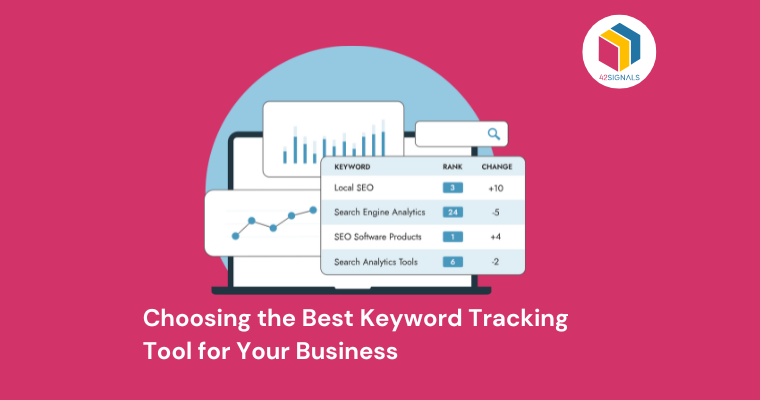We all understand the importance of outperforming our competitors in the business world. However, determining our exact position in the competitive race can be quite challenging. This is where the concept of competitor benchmarking comes to our aid. It serves as a potent strategy that unveils valuable insights into our industry landscape and the strategies employed by our competitors.
Here, we’ve crafted a detailed guide to walk you through a comprehensive checklist, ensuring that your competitor analysis is not just thorough, but highly effective.
What is competitor benchmarking?
Competitor benchmarking is a systematic process involving the comparison and evaluation of your business’s performance, strategies, and tactics in relation to your competitors. This practice entails meticulous data collection, thorough analysis, and the extraction of actionable insights to guide decision-making. By scrutinizing the strengths and weaknesses of your competitors, you can pinpoint opportunities for growth, areas necessitating enhancement, and potential threats that may affect your business.
Suppose you own a cosmetics brand. In that case, when you’re doing competitor benchmarking, you’d be looking at things like how well your skincare and makeup products perform in comparison to similar products from other beauty brands, checking whether your pricing is competitive when compared to your competitors, and assessing how your customer service measures up in the beauty industry. This competitor analysis helps you figure out where your cosmetics brand can outshine the competition.
Importance of analyzing your competitors
Gaining insights into your competitors is essential for making well-informed business choices. This knowledge enables you to spot where your competitors excel and where they fall short, seize opportunities, and shield against potential threats. Effective competitor benchmarking is the foundation of a successful strategy.
Setting Your Goals and Objectives
When establishing your goals and objectives for competitor benchmarking, consider the following:
- Define specific and measurable goals that align with your overall business strategy.
- Identify the key areas where you want to outperform your competitors, whether it’s in product innovation, customer service, or market expansion.
- Set realistic timelines for achieving your goals, taking into account the resources and capabilities at your disposal.
- Involve key stakeholders in the goal-setting process to ensure alignment and a shared vision for the company’s future.
Selecting the Right Competitors
Identifying Direct and Indirect Competitors
Direct competitors are those offering similar products or services to the same target audience. Indirect competitors may cater to different needs but can impact your market share.
Evaluating the relevance of competitors to your business
Select competitors that are relevant to your industry and location. Analyzing competitors operating in entirely different markets won’t provide meaningful insights.
Data Collection and Analysis
Data Collection and Analysis involves the comprehensive gathering of competitor data from various sources, including competitor websites, social media platforms, customer reviews, and industry reports, aiming for a more accurate and thorough analysis.
To enhance the efficiency of this process, leverage an array of tools and methods like market research software, web analytics, and social media monitoring platforms, which can streamline the data collection and analysis, ensuring a more effective and insightful competitor benchmarking approach.
SWOT Analysis and Gap Identification
Conducting a SWOT analysis and identifying gaps in your competitor’s strategies involves the following steps:
SWOT Analysis
- Strengths (S):
Evaluate your competitor’s strengths by examining what they do exceptionally well. This could include superior product quality, extensive brand recognition, or efficient supply chain management.
- Weaknesses (W):
Analyze the weaknesses in your competitor’s operations. This might encompass areas where they fall short, such as inadequate customer service, outdated technology, or limited market reach.
- Opportunities (O):
Identify potential opportunities in the market that your competitors haven’t fully capitalized on yet. This could involve emerging trends, unexplored niches, or untapped geographical markets.
- Threats (T):
Determine external factors that pose threats to your competitors. These may include economic downturns, evolving regulations, or disruptive innovations that could challenge their business.
Image Source: https://www.hustleinspireshustle.com/
Gap Identification:
Based on the SWOT analysis, pinpoint the gaps or areas where you can outperform your competitors. These gaps represent opportunities for your business to gain a competitive advantage.
Prioritize and Plan for Gap Closure:
Once you’ve identified gaps, prioritize them based on their potential impact on your business. Develop strategies to close these gaps and leverage your strengths.
Regularly Review and Update:
Remember that the competitive landscape is dynamic. Periodically review your SWOT analysis and gap identification to adapt to changing market conditions.
Actionable Insights and Strategy Development
Turning analysis into actionable insights
Translate your competitor analysis into actionable strategies. Whether it’s improving product quality, enhancing customer service, or refining your marketing approach, your insights should guide your decisions.
Crafting a strategy based on benchmarking results
Craft a well-rounded strategy that lays out the necessary actions to reach your objectives. Keep in mind that this strategy should be adaptable to accommodate shifts in the ever-changing market landscape.
Continuous Monitoring and Adaptation
The importance of ongoing Competitor Analysis
Competitor analysis is not a one-and-done task. To maintain a competitive edge, make it a habit to consistently keep an eye on your competitors and stay attuned to industry trends.
Making adjustments based on changing market conditions
As market conditions evolve, be ready to adapt your strategy. Benchmarking ensures you’re agile and responsive to industry shifts.
With this competitor benchmarking checklist in hand, you’ll have the tools to make smart decisions that propel your business to the forefront.
If you’d like professional assistance with your competitor analysis or need further guidance, don’t hesitate to reach out to us. Contact sales@42signals.com for expert support in competitor benchmarking. Your success starts with effective analysis, so take that first step today!





